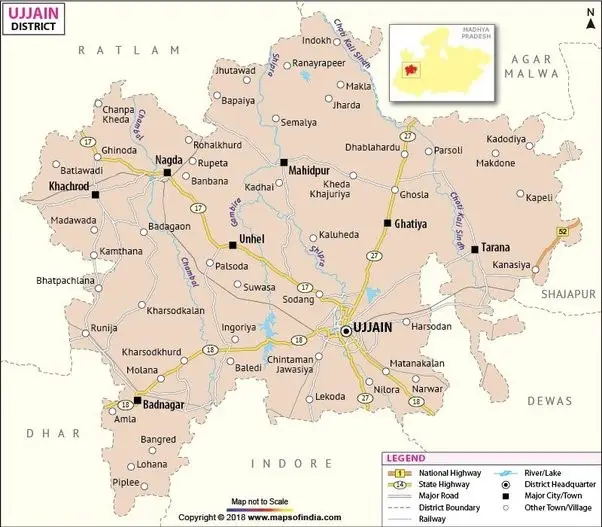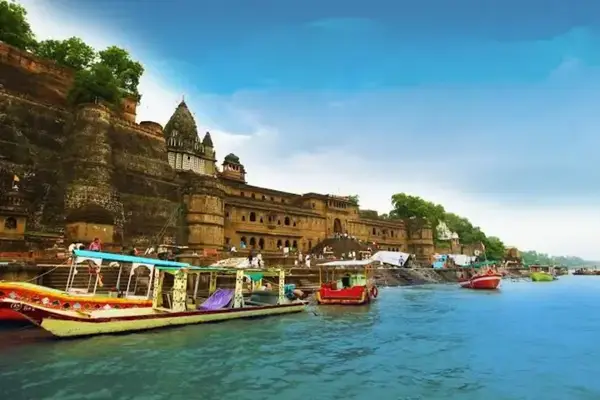The Comptroller and Auditor General of India (CAG) recently conducted a performance audit on the degradation of Kshipra River in Ujjain, Madhya Pradesh.
Key Highlights of the CAG Report:
- A performance audit was conducted by the CAG on the degradation of the river, covering 2016-17 to 2020-21.
- It was the first performance audit conducted by the CAG on a river’s degradation in central India, it runs dry for five to six months every year.
- The audit based on problem-oriented approach started with the formulation of hypotheses about the probable causes and consequences.
- It remained polluted even after multiple interventions of the state agencies and natural flow the river reduced due to improper management and over-extraction of groundwater.
- The two prime hypotheses were divided into five sub-major and 22 minor hypotheses.
- The five sub-major hypotheses about the possible causes and consequences included:
- Merging of untreated sewage in the river,
- Inadequate treatment of industrial waste,
- Pollution at riverbanks adversely affecting the water quality of the Kshipra and its two tributaries Kahn and Gambhir rivers,
- Drastic reduction in the river water flow,
- Decreasing ground water in the sub-basin affecting the flow of the Kshipra.
- The audit report concluded that Sewage treatment plants (STPs) were not constructed by urban local bodies (ULBs) keeping in view future demands.
- The sewerage network didnot cover the entire geographical area and was not completed as per timelines.
- The concerned ULBs lacked sound systems for disposal of faecal sludge, while some STPs were working on older technologies due to lack of necessary provisions.
- Many industries either ran without effluent treatment plants (ETP) or were not equipped with alternative sources of power.
- A proper mechanism for ensuring compliance of zero liquid discharge status was not available and just 4% of the selected industries were equipped with water meters.
- There was deficient action against industries even though they violated provisions of the Water Act.
- Parameters of iron, cadmium, nickel and lead were beyond the permissible limit in the ground water of Dewas industrial area.
- Guidelines regarding regulations in flood plain zones (FPZ) were not issued by the Nagar Nigams and encroachments were observed in the FPZ of Kahn and Kshipra rivers.
- There was not much progress on transforming river flow as perennial by infusing Narmada river water into the Kshipra through the Narmada Kshipra Simhastha Link project.
About Kshipra River:

- It is a sacred river of Central India and an important tributary of the Chambal River.
- Kshipra or Shipra originates in Kakri Bardi Hills in the Vindhya Range near Indore, Madhya Pradesh.
- It flows north across the Malwa Plateau, passing through the city of Ujjain- one of the seven sacred cities in Hinduism.
- It joins the Chambal River at the MP-Rajasthan border in Mandsaur district.
- The main Tributaries include Khan and Gambhir rivers
- Majority of Indian rivers flow towards the south but Kshipra is a ‘Uttargami’ (north flowing) river.
- It is considered sacred in Hinduism and is revered as highly as the Ganges River.
- Devotees take holy dips in the Kshipra River at Ujjain, particularly at Ramghat.
- The Simhasth Kumbh Mahaparv, a grand religious congregation, is celebrated every twelve years in Ujjain, attracting millions of pilgrims and devotees.
- According to the Puranas, the river originated from the heart of Varaha, an incarnation of Lord Vishnu as a boar.
- Historically, it served as a lifeline for agriculture and human settlements along its banks.
- Ujjain is a sacred Tirtha located in the Malwa region of Madhya Pradesh, called Ujjayini and Avanti during Mahajanapada and Maurya period.
- It holds significance for Shaivites and Shakti cult as it houses the Mahakaleshwar Jyotirlinga and Harsiddhi Shaktipeeth.
Ref:Source
| UPSC IAS Preparation Resources | |
| Current Affairs Analysis | Topperspedia |
| GS Shots | Simply Explained |
| Daily Flash Cards | Daily Quiz |



